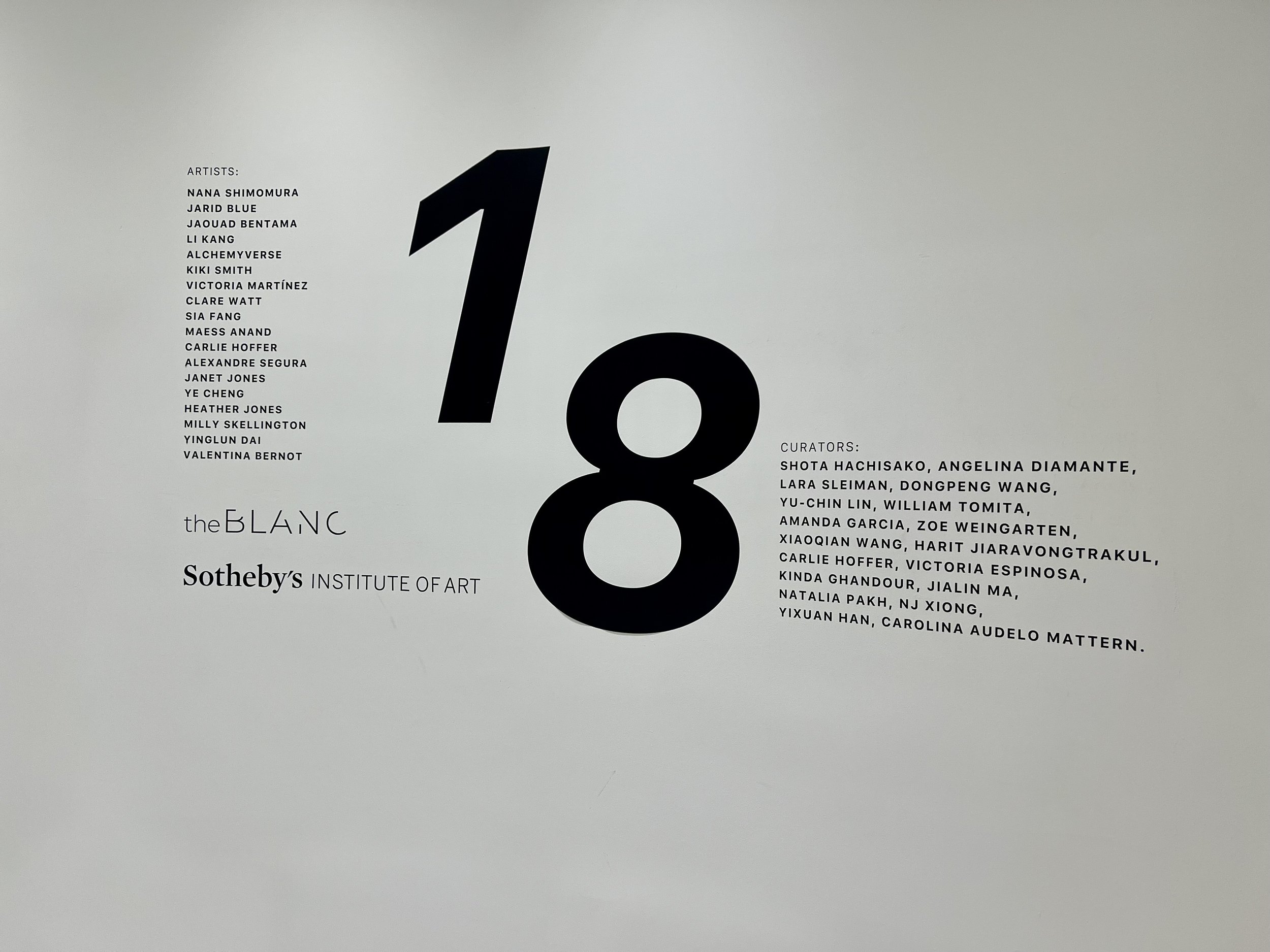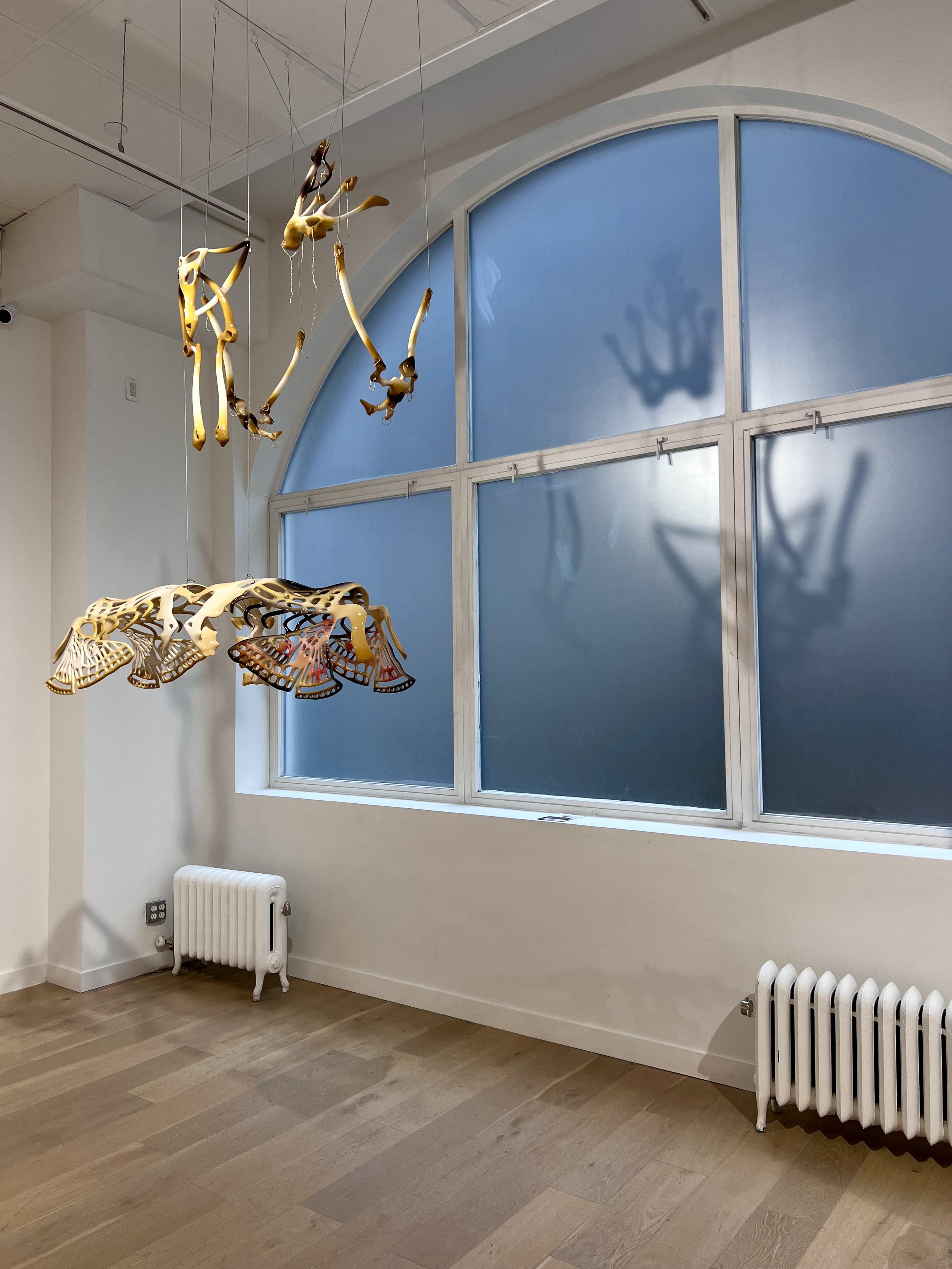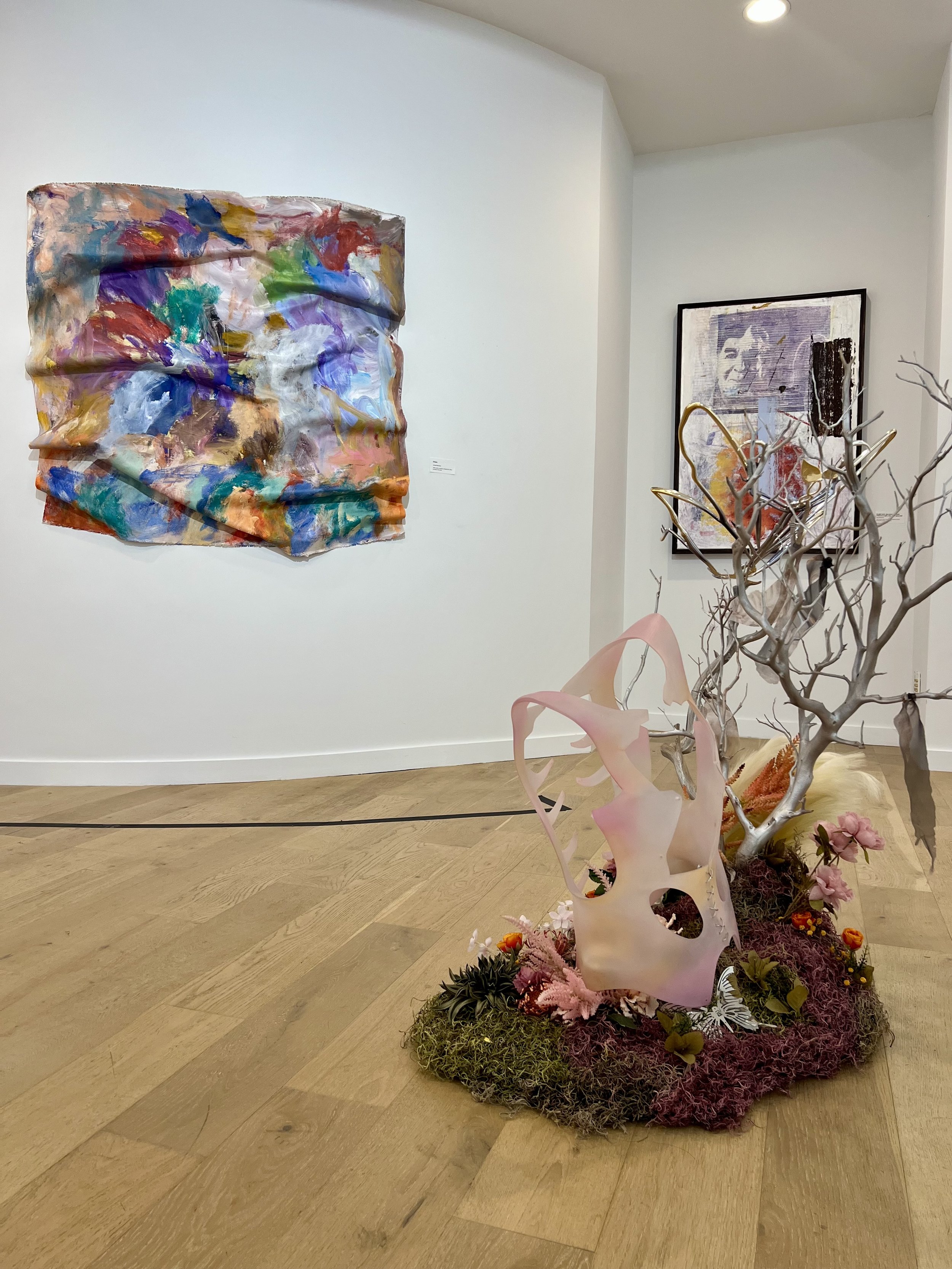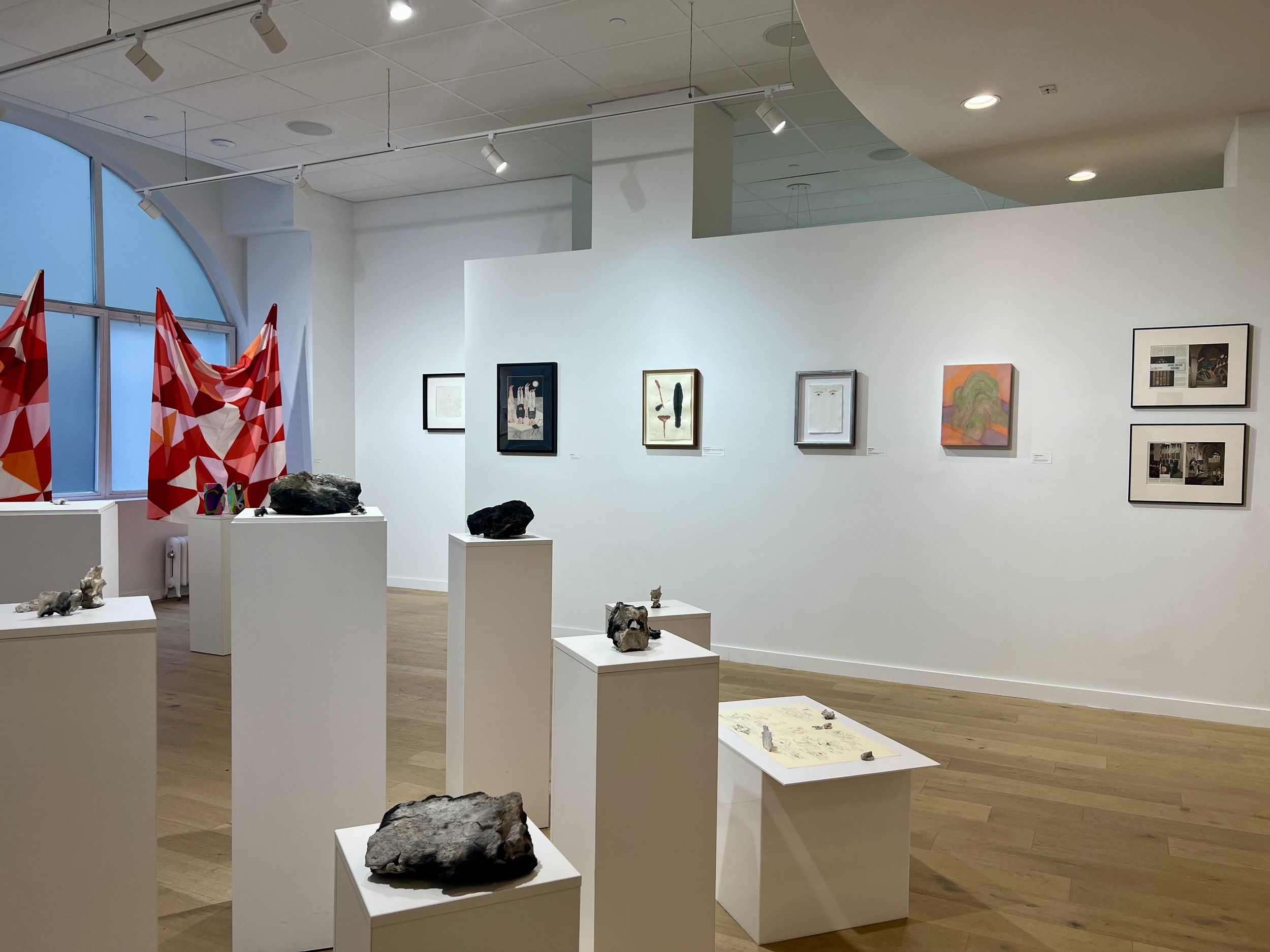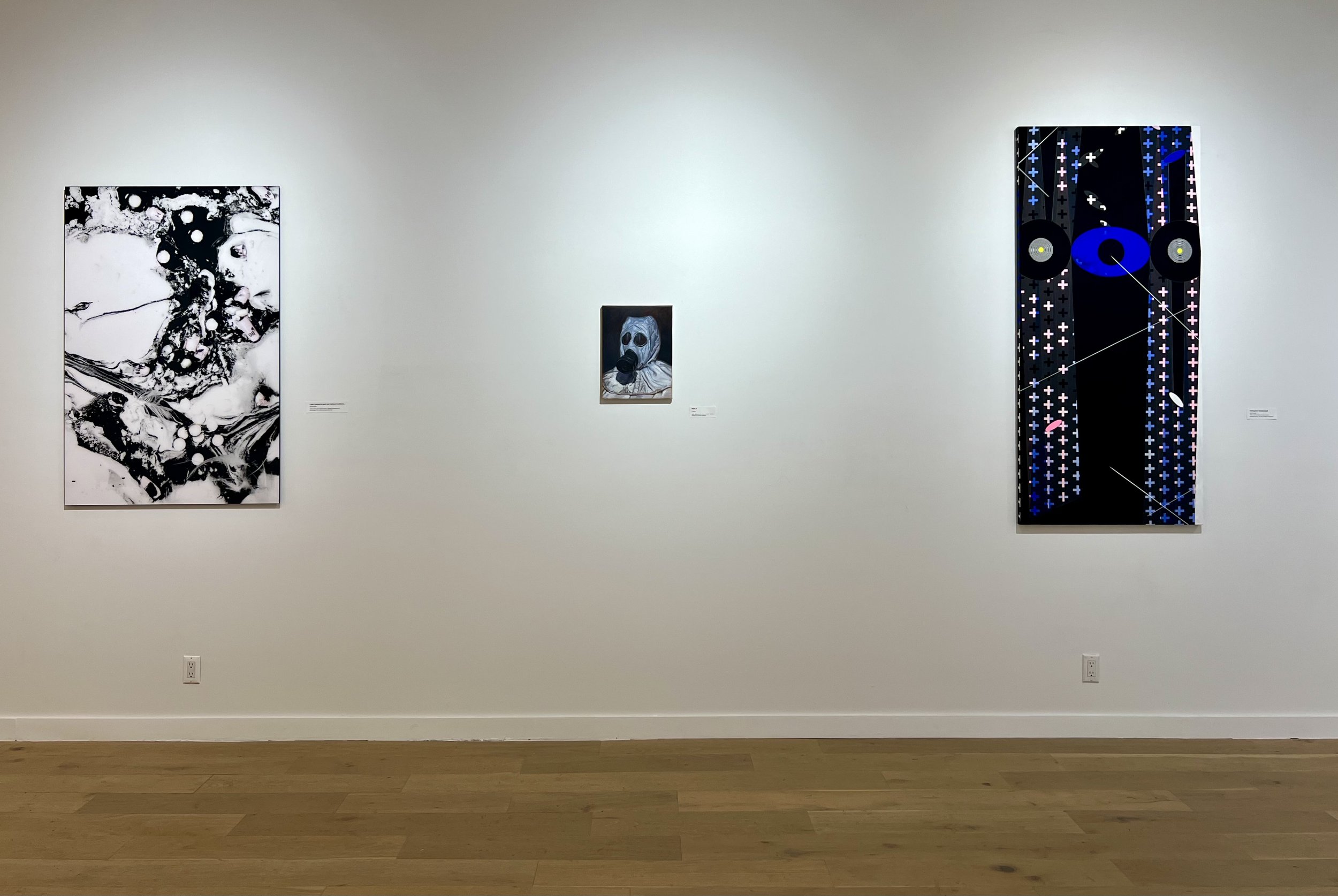Emerging Visions, Diverse Expressions: The 18 Exhibition @ TheBLANC Gallery, New York
New York’s magnetic neighbourhoods gleamed on a fresh spring week with art patrons sharing wine and sparring ideas. The soft hum of pristine exhibitions, ingenious artworks, and buzzy art fairs entices a global audience to New York’s art week. This included prominent art fairs such as Frieze and TEFAF, and emerging ones such as 1-54 and Volta, among others.
In the midst of it all, Sotheby’s Institute of Art and TheBLANC Gallery presented an unprecedented group exhibition entitled 18. Here the works of 18 international, emerging artists were curated by 18 budding art professionals & graduates of the Institute. 18 provided a platform to question the ideologies and intentions of the curator’s own unique curatorial approach.
Installation view.
How can curatorial practices create an inclusive space, explore political notions, or preserve art? How can curators spar, elevate, and realise an artist’s idea while simultaneously engaging in a dialogue with its viewers? The curatorial team of 18 embodied a diverse group of students; each curator was tasked with selecting and collaborating with one artist. With next-to-no budget, 18 is a testament to experimental practices and art that transcends exhibition spaces. It was partially inspired by ‘The Kitchen’, the first exhibition curated by Hans Ulrich Obrist when he was just a student at the University of St. Gallen. In this debut, Obrist drew upon his visits to large-scale museum shows and “was searching for a way to make a contribution” and answering, “how could I be useful to artists?”
On 18’s opening night (May 16th), troves of people ascended the elevator to a classic modern “white cube” gallery tucked within an unassuming Midtown highrise. Yet the ideologies of Brian O’Doherty, and other philosophical influences are far removed. Instead, a global group of artists creates an all-embracing environment. The show at TheBLANC Gallery exhibits an array of multidisciplinary artworks, from collage, painting, photography, textiles, 3D printed sculptures, and mixed media. The array of artist practices and materials is visually astonishing, as here presents a rendezvous of art history and today’s artists’ witty interpolation of contemporary context and new materials.
Installation view. Left corner: Sia Fang, Disguise in Nature, 2023.
In opposing corners, Heather Jones’ And So, Become Yourself (2023) and Sia Fang’s Disguise in Nature (2023) are each levitated above the floor, subtly drifting and dancing in juxtaposed harmony. Imploring a feminine colour palette, each intersects fashion and art in different and nuanced ways.
Heather Jones, And So, Become Yourself, 2023. Sewn cotton and grommets, 72 x 133 in. Courtesy of the artist.
And So, Become Yourself, with its variance of reds, whites, and pinks, breezily flows with the light air movements of passing viewers. Jones’ work translates themes of femininity, motherhood, and intimacy through the intentional material choice of textiles. For this specific piece, the textiles are made of sewn cotton and grommets. Jones is influenced by the geometric abstract works of textile artist Anni Albers and American painter Sam Gilliam. And So, Become Yourself is a patchwork of 36 squares and also 72 triangles which symbolises the age of the artist’s mother when she passed away.
Sia Fang, Disguise in Nature, 2023. 3D printed sculptures, dimensions variable. Courtesy of the artist.
Striking, rigid, and celestial, Disguise in Nature almost looms above the guests as its wall label is placed advertently at the hem of the floating sculpture. With a penchant for experimentation with ephemeral materials, Fang brings together a winged skeletal body of soft pastels made of lustrous resin created with a 3D printer. The hanging sculpture presents bones of crescent white, yellow, and brown bones above a hanging winged torso of a similar colour palette but also includes reds and pinks on one wing. The contrast between the smooth material and jarring edges of the bones explores notions of duality within each individual. Initially, Fang sees this work as a representative of a protective “skin”. The artist’s intention is to have the artwork/fashion collection eventually transform over time into another piece that represents an individual’s second persona, aimed to unveil the innately pernicious traits in each of us.
Jarid Blue, Light Bath: Skeleton, 2018. Inkjet print on Hahnemühle photo rag, 19 x 23.5 in. Courtesy of the artist.
Some other works take the 2D form of painting and photography, in which the artist then adds their own unique contemporary twist to this traditional medium. Light Bath: Skeleton (2018) by Jarid Blue is particularly mesmerising. A pair of eyes peer down from a jet-black background. Shrouded by skeletal anatomy, there are distinct identity features on this bag of bones: a lanky necklace; gauzy tattoos; standard blue jeans and a belt; and a few strands of glossy black hair. At first glance, the photograph appears digitally manipulated. This piece is one of several from a series of photographs that Blue calls “Light Baths”, which seeks to diminish the harsh lights of traditional photography techniques. Utilising graphic designs and other digital patterns, Blue “Baths” projects these designs and patterns on the subject and then captures these entrancing configurations with a camera shot.
Milly Skellington, Es gibt Licht, das niemals erlischt (There is a Light, that never goes out), 2022. Oil, pen, gesso, and automated marks on canvas. 34.25 x 50 in. Courtesy of the artist.
Lastly, Milly Skellington’s Es gibt Licht, das niemals erlischt (There is a light that never goes out) (2022) challenges the notion of the artist and machine’s role within art production today. The 34 by 50-inch canvas presents an abstract visual of dramatic, layered oil paint intermixed with a blueprint face transcribed in pen by the automated renderings of a self-made machine. Reminiscent of Robert Rauschenberg’s silkscreen photographic images collages with gestural brushstrokes, Skellington recontextualises images and adds the daunting emblems of contemporary digitalisation.
Above: 18 Installation Views.
Independent, maverick, and bold, 18 was spearheaded by the tenacious spirits of emerging artists and co-curators. The curatorial process was ever-evolving, playful yet critical, and was refined and enhanced through open dialogue and collaboration among the artists and co-curators. Each person contributed a unique element to the exhibition as a whole and, equally importantly, to the wider dialogue of contemporary art and production today.
18 was on display at TheBLANC Gallery, 15 E 40th Street, Suite 200, Manhattan, through May 23, 2023.
Video tour of the 18 exhibition can be found at TheBLANC Gallery’s Instagram here. Courtesy of TheBLANC Gallery.
Sia Fang, Disguise in Nature, 2023 was co-curated by Xiaoqian Wang; Heather Jones, And So, Become Yourself, 2023 was co-curated by Natalia Pakh; Jarid Blue, Light Bath: Skeleton, 2018, was co-curated by Angelina Diamante; and Milly Skellington, Es gibt Licht, das niemals erlischt (There is a light that never goes out), 2022, was co-curated by NJ Xiong.
NJ Xiong
Contributing Writer, MADE IN BED


